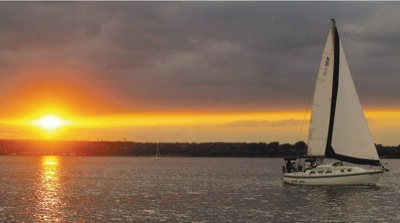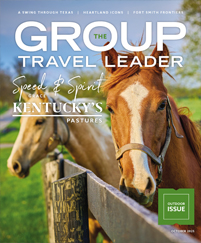
Courtesy Finger Lakes Tourism Alliance
From the breathtaking waterfalls of the Finger Lakes region to the fresh artisanal cheeses from Genesee County, the communities of central New York offer opportunities to satisfy any travel appetite.
Far from the hype and crowds of Manhattan, the central region of New York stretches across the breadth of the Empire State, encompassing a diverse variety of natural, cultural and historical riches. Tour groups with divergent interests and tastes will find something to please almost every passenger on a trip from Albany to Rochester.
For the nature-lovers in your group, the state parks in the Finger Lakes area preserve beautiful scenery and some fascinating rock and water features.
History comes to life in Auburn and Cayuga County, where Harriet Tubman and other Underground Railroad luminaries lived.
In Syracuse, shopaholics can get their fix at a number of large malls and smaller boutique retail areas. Albany County has a thriving arts and cultural scene, and stops in Genesee County will be favorites for your foodies.
Include these places on your next tour of New York to create a travel menu everyone will appreciate.
Go wild in the Finger Lakes
Abundant water — and the beautiful natural formations it has created — make the Finger Lakes an ideal destination for outdoor activity.
“We are 11 glacially carved lakes,” said Cynthia Kimble, president of the Finger Lakes Tourism Alliance. “As the glaciers receded, they left wonderful lakes and waterfalls. Folks coming to this area are going to find outdoor adventure in every form.”
Two of the lakes are set aside as protected wilderness areas; the other nine are open for public use. Groups can take sightseeing or dinner cruises on the lakes, or take an Erie Canal cruise to experience what it’s like to go through the lock and dam system.
State parks preserve some of the area’s natural treasures, including many of the 1,000 waterfalls caused by glacial carving. Taughannock Falls State Park has the tallest falls east of the Mississippi River — taller than nearby Niagara Falls; Buttermilk Falls features a rapid flow of water that churns up into a creamy white color at the foot of the cascade.
“Robert Treman State Park is a really intimate experience with a waterfall,” Kimble said. “If you hike the trails, you walk right next to the waterfalls. At the bottom, you can swim in the falls, right there in the park.”
Watkins Glen State Park is New York’s most visited state park; it features 19 waterfalls. Visitors can hike to the bottom of the slope and then take a shuttle bus back to the top.
On Canandaigua Lake, adventurous visitors can take sailboarding, windsurfing, scuba and hydrobike expeditions. More peaceful options include bird-watching at the Montezuma Wildlife Refuge near Seneca Falls or at Queen Catherine Marsh near Watkins Glen.
www.fingerlakes.org
Auburn’s heritage of freedom
Auburn’s tourism officials market the city as History’s Hometown and for good reason: Several notable Americans made their homes there, and history buffs can tour their properties to learn about New York’s role in the Underground Railroad.
Perhaps the most famous freedom fighter to take up residence in Auburn was Tubman.
“She was a conductor on the Underground Railroad, and after she led slaves to freedom, she settled here in Auburn,” said Meg Vanek, executive director of the Cayuga County Office of Tourism. “Her home there is still standing, as well as the home that she built for the aged. That’s the home that you can tour.”
Visitors can also see Tubman’s grave at the Fort Hill Cemetery and visit the local church she attended while in Auburn. The land on which Tubman lived was given to her by William Seward, a New York governor and U.S. secretary of state under Abraham Lincoln, whose purchase of the Alaska territory became known as “Seward’s Folly.”
Seward’s home in Auburn still stands, and throughout its 17 rooms, visitors will find hundreds of artifacts and pieces of memorabilia Seward accumulated during his international travels as secretary of state. A tour of the home also shows some of the areas where runaway slaves were hidden as part of the Underground Railroad.
The Seward house is part of Auburn’s historic downtown district, which features a number of homes built in Victorian, Queen Anne and Mission styles. Other places of note in Auburn include the Willard Memorial Chapel, an 1890s church designed by Louis Comfort Tiffany, and the Cayuga Museum, which has the original equipment used to invent sound-on-film movies in the 1920s.
Outside of town, the Ward O’Hara Agricultural Museum gives visitors a look at early farm life in the area.
“It takes you back to life on the farm between the 1800s and 1940s,” Vanek said. “It’s really hands-on — it shows you what a blacksmith shop or a country store would look like. There’s farm equipment that you can touch, and they also have an herb garden. They give groups herbs as a free gift when they come.”










